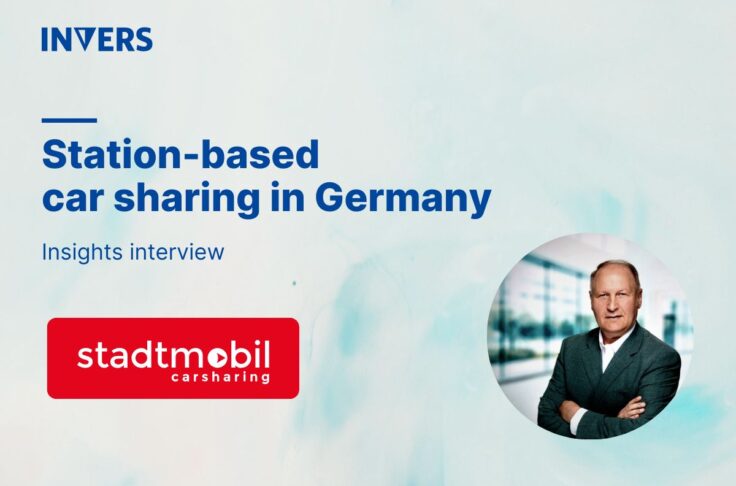Webinar Recap: Crucial Lessons from Growing Shared Mobility Operations
Summary
Sandra Phillips, founder and CEO of movmi, and Leigh Angman, founder of Mondofi, joined Chris Anderson, our Sales and Partner Manager for a webinar on lessons learned from launching and growing shared mobility operations. Our panel raised crucial questions that operators should ask themselves when making operational, business, and technical pre-launch decisions.
New operators continue to enter and expand into the growing shared mobility space worldwide. However, many are unaware of key considerations and questions that they should be asking themselves when planning to enter this new market. Below are three key pieces of advice our webinar panelists gave to operators planning their launch or expansion:
- Why you should adjust your plans to your customer
- Things to consider when launching your service
- Communicate with your partners
Be prepared to change your plans after interacting with customers
Leigh was only half-joking when he said “everything sounds so ideal until you inject those pesky customers into the mix.” Many shared mobility services get their start from teams with strong technical and engineering backgrounds, who often don’t anticipate how much unpredictable clients will affect their plans. Customers will always do something unintended to break event the best-prepared system. For example, what happens when they left their umbrella in the back seat two minutes after they ended their rental? Can they go back and unlock the door, or do they need to start a new rental? What if another customer reserved the same car during those two minutes?
Our panelists had several suggestions to help minimize the impact unpredictable customers have on plans:
First, operators should consider as many variables as they can prior to making critical business choices. Taking one extra hour to plan and anticipate problems can save ten hours of fixing those problems.
Second, operators should lean on the experience of their partners. They have likely previously dealt with and solved problems that new operators experience, and may even be able to anticipate them. It is however up to the operator to choose a partner whose experience fits their profile. A software provider with many station-based clients may not be the best match for a free-floating mobility startup, for example.
And finally, operators shouldn’t let their egos stand in the way of reversing a bad decision. A pilot may reveal that the technology being tested is not a good fit. Criteria for selecting the technology that were thought to be important, may turn out to be secondary during the pilot. It’s then better to start a new pilot with different technology instead of launching and hoping to force a square block into a round hole later.
Things take even longer than you expect
The majority of our audience gave or will give themselves 6 months to plan before launch, according to the results of our in-webinar poll. However, there are cases where Sandra advised operators to give themselves even more time for things that are out of their control.

First off, insurance may be surprisingly difficult and/or expensive to get, depending on the market and use case. Sandra mentioned a client in Hawaii that needed 18 months to find an insurer and underwriter. Another client had to completely revise their financial plan when they learned how expensive it would be to get insurance in New York. Insurance companies will also look at use cases; a station-based operator that parks its vehicles securely underground will have much lower costs than a free-floating operator who’s customers may leave vehicles in the bad part of town, for example.
And second, it’s critical for shared mobility operators to research parking regulations in their target market. The curbside is becoming the most valuable, coveted, and regulated space in cities. Free-floating operators are competing with taxis, Uber and Lyft, delivery trucks, delivery robots, micromobility stations, and others for it. Additionally, some cities have began replacing some curbside parking spots with parklets or patios. Some cities “get” shared mobility and will be more willing to work with operators than others in creating parking regulations.
It’s a good idea to start researching and begin conversations on these two topics in the earliest planning stages for launching and growing shared mobility operations.
Ask your partners questions instead of suggesting solutions
Instead of looking for specific solutions from partners, shared mobility operators should describe the challenges they need to overcome. Insisting on a specific solution to a problem can leave another problem unsolved, or even create a new one. It’s better to start a deeper discussion with partners on use cases, and how customers may use the system. Operators can then lean on their partner’s previous experience in solving similar problems.
Chris brought up the example of an operator who may insist on Bluetooth so that clients can start and end rentals where there’s no cel reception. Many European software providers don’t think Bluetooth is critical, since Europe has great cellular network coverage. An operator might then eliminate any software partner that doesn’t work with Bluetooth, losing out on other great benefits and features. Instead of insisting on Bluetooth, the operators could instead present their problem and ask the partner for input on solutions. The partner might instead suggest a system that can use physical keys, which also happens to solve the problem of how to start or end rentals when the customer’s phone dies and both cellular connectivity and Bluetooth are unavailable.
More from the webinar on growing shared mobility operations
Sandra, Leigh, and Chris also provided questions and possible answers to other issues operators should ask themselves when planning launches:
- Operations: run them yourself or contract them out? Set and forget, or be actively involved?
- How will you grow? What revenue streams have you looked/not looked at?
- What data points do you really need, and how will those needs change your technical requirements?
- What to look for in the type of support your technology partners offer?
You should check out the entire webinar recording, whether you are a new shared mobility operator planning a launch, or an existing service provider with expansion in mind.
Do you have questions about the telematics connectivity solutions mentioned in the webinar? Please contact our experts to learn how you can connect to our flexible, vehicle-agnostic system.


